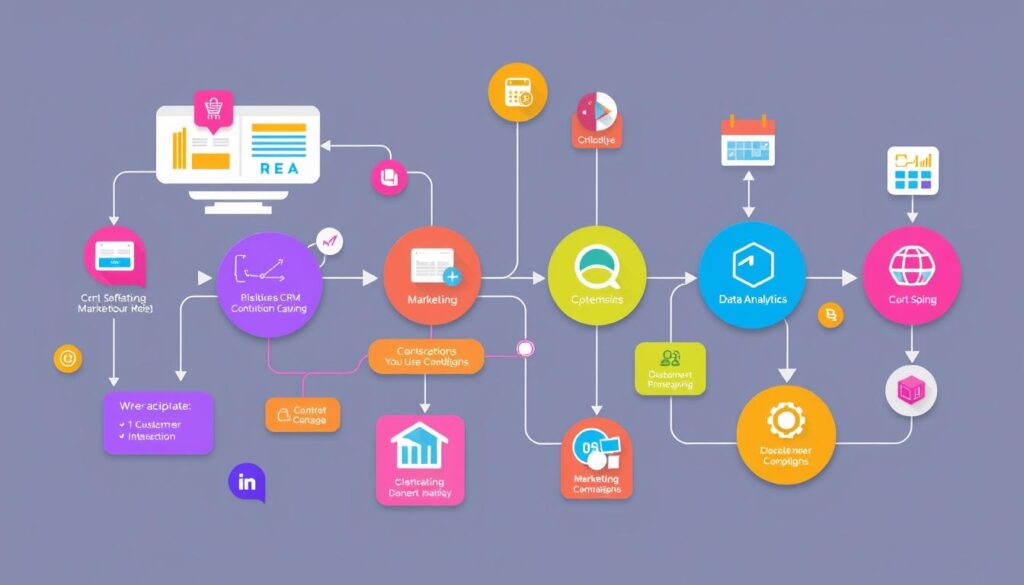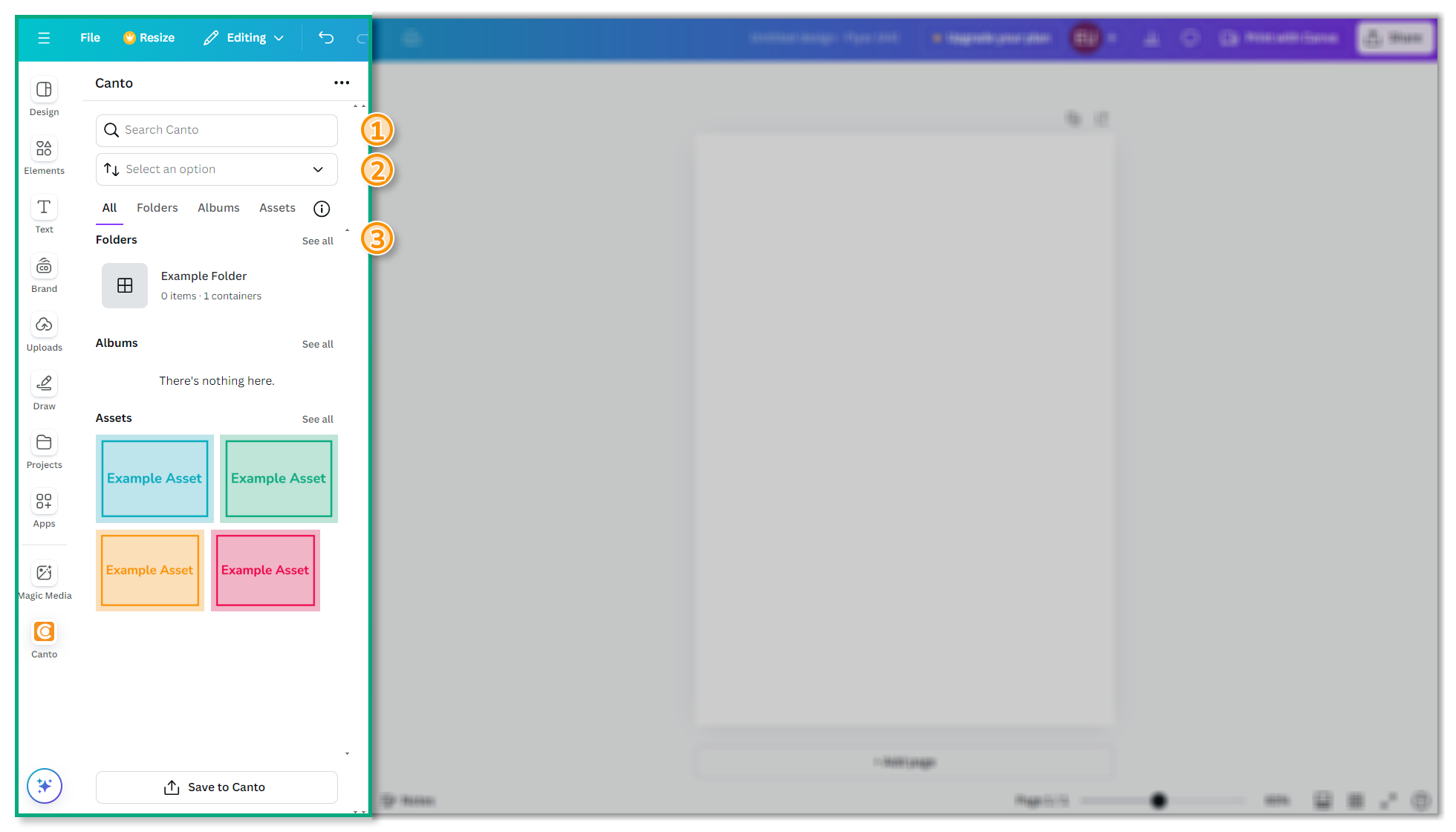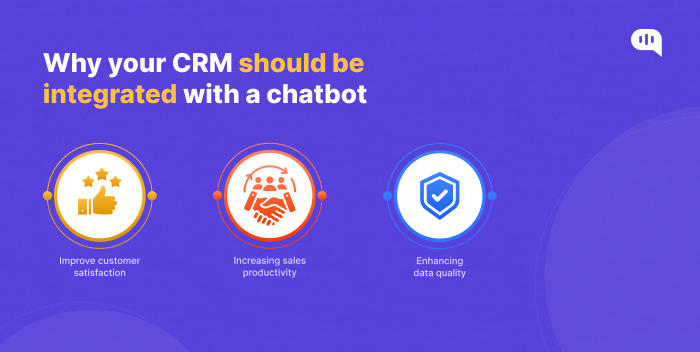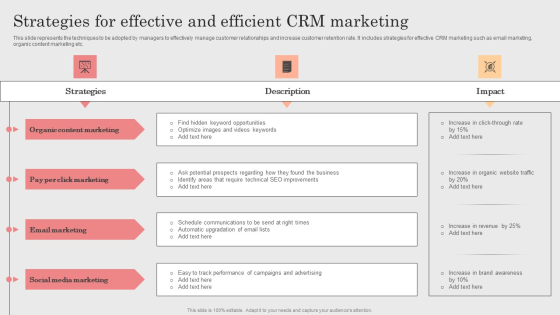Mastering CRM Marketing Workflows: A Comprehensive Guide to Automation and Success

Mastering CRM Marketing Workflows: A Comprehensive Guide to Automation and Success
In today’s fast-paced digital landscape, businesses are constantly seeking ways to streamline operations, improve customer relationships, and boost their bottom line. One of the most effective strategies for achieving these goals is through the implementation of robust CRM marketing workflows. This comprehensive guide will delve into the intricacies of CRM marketing workflows, providing you with the knowledge and tools you need to design, implement, and optimize them for maximum impact.
What is a CRM Marketing Workflow?
At its core, a CRM marketing workflow is a series of automated steps designed to guide your leads and customers through the sales funnel. These workflows leverage the power of your Customer Relationship Management (CRM) system to trigger actions based on specific customer behaviors, demographics, and interactions. Think of it as a pre-programmed journey for each customer, ensuring they receive the right message, at the right time, through the right channel.
A well-designed CRM marketing workflow can automate various tasks, including:
- Sending welcome emails to new subscribers
- Nurturing leads with targeted content
- Segmenting customers based on their interests and behaviors
- Triggering abandoned cart emails
- Personalizing product recommendations
- Automating follow-up sequences after a purchase
- Collecting customer feedback
By automating these processes, you can free up your marketing team’s time, reduce manual errors, and improve overall efficiency. More importantly, you can deliver a more personalized and relevant customer experience, leading to increased engagement, conversions, and loyalty.
Why Are CRM Marketing Workflows Important?
In the realm of digital marketing, automation is no longer a luxury; it’s a necessity. CRM marketing workflows are critical for several reasons:
1. Enhanced Efficiency and Productivity
Automating repetitive tasks allows your marketing team to focus on more strategic initiatives, such as content creation, campaign planning, and data analysis. This leads to improved productivity and a more efficient use of resources.
2. Improved Customer Experience
Personalized and timely communication is key to building strong customer relationships. CRM marketing workflows enable you to deliver relevant content and offers based on individual customer preferences and behaviors, resulting in a more engaging and satisfying experience.
3. Increased Lead Conversion Rates
Nurturing leads with targeted content and automated follow-up sequences can significantly increase conversion rates. By guiding leads through the sales funnel, you can move them closer to making a purchase.
4. Higher Customer Retention Rates
Personalized communication and proactive customer service contribute to higher customer retention rates. CRM marketing workflows allow you to stay connected with your customers, provide valuable support, and build lasting relationships.
5. Data-Driven Insights
CRM systems collect a wealth of data about your customers and their interactions with your business. CRM marketing workflows allow you to leverage this data to gain valuable insights into customer behavior, campaign performance, and overall marketing effectiveness. This data can be used to optimize your workflows and improve your marketing ROI.
Key Components of a Successful CRM Marketing Workflow
To create effective CRM marketing workflows, you need to understand the key components that drive their success:
1. Clearly Defined Goals
Before you start building a workflow, you need to define your goals. What do you want to achieve? Are you trying to increase lead generation, improve conversion rates, or boost customer retention? Having clear goals will help you design workflows that are aligned with your business objectives.
2. Segmentation
Segmentation involves dividing your customer base into distinct groups based on their demographics, behaviors, or interests. This allows you to tailor your messaging and offers to specific customer segments, increasing the relevance and effectiveness of your campaigns.
3. Triggers
Triggers are the events that initiate your workflows. These can include:
- A new subscriber signing up for your newsletter
- A lead downloading a resource
- A customer making a purchase
- A customer abandoning their cart
- A customer visiting a specific page on your website
By carefully selecting your triggers, you can ensure that your workflows are activated at the right time and in response to the right customer actions.
4. Actions
Actions are the steps that are performed within your workflows. These can include:
- Sending emails
- Updating customer records
- Adding or removing customers from lists
- Triggering tasks for your sales team
- Sending SMS messages
Your actions should be designed to achieve your workflow goals and provide value to your customers.
5. Content
The content you deliver within your workflows is crucial. It should be relevant, engaging, and tailored to the specific customer segment and the stage of the sales funnel they are in. This may include:
- Welcome emails
- Lead nurturing emails
- Product recommendations
- Promotional offers
- Customer support messages
Invest time in creating high-quality content that resonates with your target audience.
6. Timing
The timing of your workflow actions is critical. Consider the optimal time to send emails, trigger follow-up sequences, and deliver offers. Test different timings to see what works best for your audience.
7. Personalization
Personalization is key to creating a positive customer experience. Use customer data to personalize your emails, offers, and other communications. This includes using the customer’s name, referencing their past purchases, and tailoring content to their interests.
8. Testing and Optimization
Once your workflows are live, it’s important to continuously test and optimize them. Analyze your results, track key metrics, and make adjustments as needed to improve performance. A/B testing different subject lines, email content, and call-to-actions can help you identify what resonates most with your audience.
Types of CRM Marketing Workflows
There are numerous types of CRM marketing workflows you can implement. Here are some of the most common and effective:
1. Welcome Series
This workflow is triggered when a new subscriber joins your email list. It typically includes a welcome email, a brief introduction to your brand, and links to your most popular content. The goal is to engage new subscribers and set the stage for future communication.
2. Lead Nurturing
This workflow is designed to nurture leads and guide them through the sales funnel. It typically involves sending a series of emails with valuable content, such as blog posts, ebooks, and webinars, to educate leads about your products or services and build trust.
3. Abandoned Cart
This workflow is triggered when a customer adds items to their cart but does not complete the purchase. It typically involves sending an email reminding the customer of the items in their cart and offering an incentive to complete the purchase, such as free shipping or a discount.
4. Customer Onboarding
This workflow is designed to onboard new customers and ensure they have a positive experience with your product or service. It typically includes a series of emails providing helpful tips, tutorials, and support resources.
5. Post-Purchase Follow-Up
This workflow is triggered after a customer makes a purchase. It typically includes a thank-you email, a request for feedback, and recommendations for related products. The goal is to build customer loyalty and encourage repeat purchases.
6. Re-engagement
This workflow is designed to re-engage inactive subscribers. It typically involves sending a series of emails with special offers, exclusive content, or a reminder of the value your brand provides.
7. Segmentation-Based Workflows
These workflows are triggered based on customer segmentation. For example, you could send a targeted email to customers who have purchased a specific product, recommending related products or offering exclusive deals.
How to Build a CRM Marketing Workflow
Building a CRM marketing workflow involves several steps:
1. Choose Your CRM Platform
The first step is to choose a CRM platform that meets your needs. Some popular options include:
- Salesforce
- HubSpot
- Zoho CRM
- Pipedrive
- ActiveCampaign
Consider factors such as features, pricing, ease of use, and integrations with other tools.
2. Define Your Goals
As mentioned earlier, clearly define your goals for the workflow. What do you want to achieve?
3. Map Out the Customer Journey
Understand the customer journey from start to finish. What are the different stages of the sales funnel? What actions do customers take at each stage?
4. Segment Your Audience
Divide your audience into distinct segments based on their demographics, behaviors, and interests.
5. Choose Your Triggers
Select the events that will trigger your workflows.
6. Design Your Actions
Determine the actions that will be performed within your workflows. This includes sending emails, updating customer records, and triggering tasks.
7. Create Your Content
Develop high-quality content that is relevant to your target audience and the stage of the sales funnel they are in.
8. Set Up Your Workflow in Your CRM
Use your CRM platform to set up your workflow, including the triggers, actions, and content.
9. Test Your Workflow
Before launching your workflow, test it thoroughly to ensure it is working correctly. Send test emails and review the results.
10. Launch and Monitor
Once you are satisfied with your workflow, launch it and monitor its performance. Track key metrics and make adjustments as needed.
Best Practices for CRM Marketing Workflows
To maximize the effectiveness of your CRM marketing workflows, follow these best practices:
1. Keep it Simple
Start with simple workflows and gradually add complexity as needed. Don’t try to do too much at once.
2. Personalize Your Messaging
Use customer data to personalize your emails, offers, and other communications.
3. Provide Value
Focus on providing value to your customers. Offer helpful content, exclusive deals, and excellent customer service.
4. Optimize for Mobile
Ensure that your emails and landing pages are optimized for mobile devices.
5. A/B Test Everything
Continuously test different subject lines, email content, and call-to-actions to see what resonates most with your audience.
6. Track Your Results
Track key metrics, such as open rates, click-through rates, conversion rates, and customer lifetime value. Use this data to optimize your workflows.
7. Stay Compliant
Comply with all relevant data privacy regulations, such as GDPR and CCPA.
8. Regularly Review and Refine
CRM marketing workflows are not set-it-and-forget-it. Regularly review your workflows, analyze their performance, and make adjustments as needed to keep them up-to-date and effective.
Tools for CRM Marketing Workflow Automation
Several tools can help you build and manage your CRM marketing workflows. Some of the most popular include:
- CRM Platforms: As mentioned earlier, platforms like Salesforce, HubSpot, and Zoho CRM offer built-in workflow automation features.
- Email Marketing Platforms: Email marketing platforms like Mailchimp, ActiveCampaign, and GetResponse provide robust workflow automation capabilities.
- Marketing Automation Platforms: Marketing automation platforms like Marketo and Pardot offer advanced workflow automation features, including lead scoring, behavior-based segmentation, and multi-channel marketing.
- Zapier: Zapier is a popular integration platform that allows you to connect your CRM system with other marketing tools and automate workflows across multiple platforms.
When choosing a tool, consider your budget, technical skills, and the complexity of your workflows.
Measuring the Success of Your CRM Marketing Workflows
To determine the effectiveness of your CRM marketing workflows, you need to track and analyze key metrics. These metrics provide valuable insights into your campaign performance and help you identify areas for improvement.
1. Open Rates
Open rates measure the percentage of recipients who open your emails. A high open rate indicates that your subject lines are compelling and that your audience is engaged.
2. Click-Through Rates (CTR)
Click-through rates measure the percentage of recipients who click on links in your emails. A high CTR indicates that your content is relevant and that your call-to-actions are effective.
3. Conversion Rates
Conversion rates measure the percentage of recipients who complete a desired action, such as making a purchase, filling out a form, or requesting a demo. Conversion rates are a critical indicator of your workflow’s success.
4. Lead Generation
Track the number of leads generated through your workflows. This includes leads who sign up for your email list, download resources, or request a consultation.
5. Sales Revenue
Measure the revenue generated from sales that can be directly attributed to your CRM marketing workflows. This helps you calculate your ROI.
6. Customer Lifetime Value (CLTV)
CLTV measures the total revenue a customer is expected to generate over the course of their relationship with your business. Improving CLTV is a key goal of many CRM marketing workflows.
7. Customer Retention Rate
Track your customer retention rate to measure the effectiveness of your customer onboarding, post-purchase follow-up, and re-engagement workflows. A higher retention rate indicates that your customers are satisfied and loyal.
8. Cost per Acquisition (CPA)
Calculate your CPA to determine the cost of acquiring a new customer through your CRM marketing workflows. This metric helps you evaluate the efficiency of your campaigns.
9. Return on Investment (ROI)
Calculate your ROI to determine the profitability of your CRM marketing workflows. ROI is calculated by dividing the net profit by the cost of the investment.
By regularly monitoring these metrics, you can gain valuable insights into your workflow performance and make data-driven decisions to optimize your campaigns and improve your results.
Common Challenges and How to Overcome Them
While CRM marketing workflows offer significant benefits, you may encounter some challenges. Here are some common hurdles and how to overcome them:
1. Data Quality Issues
Poor data quality can undermine the effectiveness of your workflows. Ensure that your CRM data is accurate, complete, and up-to-date. Implement data cleansing procedures and regularly review your data to identify and correct errors.
2. Lack of Personalization
If your workflows are not personalized, they may not resonate with your audience. Use customer data to tailor your messaging, offers, and content to individual preferences and behaviors.
3. Irrelevant Content
If your content is not relevant to your target audience, your workflows will not be effective. Segment your audience and create content that is tailored to their specific interests and needs.
4. Poor Timing
If your workflows are not timed correctly, they may not reach your audience at the right moment. Test different timings to see what works best for your audience.
5. Over-Automation
Avoid over-automating your marketing efforts. While automation is valuable, it’s important to strike a balance between automation and human interaction. Don’t be afraid to personalize your communications and provide human support when needed.
6. Lack of Integration
If your CRM system is not integrated with other marketing tools, you may miss valuable opportunities to automate workflows and improve your results. Integrate your CRM with your email marketing platform, social media channels, and other relevant tools.
7. Lack of Testing and Optimization
If you don’t test and optimize your workflows, you may not achieve the best results. A/B test different subject lines, email content, and call-to-actions to identify what resonates most with your audience. Regularly analyze your results and make adjustments as needed.
8. Getting Started
The initial setup can seem daunting. Break down the process into smaller, manageable steps. Start with a simple workflow and gradually add complexity as you gain experience. Don’t be afraid to seek help from your CRM provider or a marketing automation expert.
Conclusion: The Path to Marketing Success
CRM marketing workflows are a powerful tool for businesses looking to streamline their marketing efforts, improve customer relationships, and drive revenue growth. By understanding the key components of a successful workflow, implementing best practices, and continuously monitoring and optimizing your campaigns, you can unlock the full potential of your CRM system and achieve your marketing goals.
Embrace the power of automation, personalization, and data-driven insights to create engaging and effective marketing experiences that resonate with your target audience. With a well-designed and optimized CRM marketing workflow, you can transform your marketing from a guessing game into a strategic driver of business success.
So, take the time to analyze your current processes, identify areas for improvement, and start building your CRM marketing workflows today. The investment in time and effort will pay off handsomely in the long run, leading to increased efficiency, improved customer satisfaction, and ultimately, a thriving business.





